Subaru XV (2018-2023) Review
Written by Andrew Brady
Quick overview
Pros
- The reassurance and security of all-wheel drive as standard
- Safety credentials, including automatic emergency brakes
- Solid build quality and a long list of standard equipment
Cons
- Relatively pricey with high running costs
- Lack of a manual gearbox or diesel option will limit sales
- The 1.6i petrol engine is sluggish and inefficient
Overall verdict on the Subaru XV
"The addition of the hybrid version keeps the Subaru XV current in a world that’s turning to electrification. It’s also a car with genuine off-road capabilities and all-weather reassurance. However, there’s no denying that the Subaru XV is an expensive car with equally high running costs."
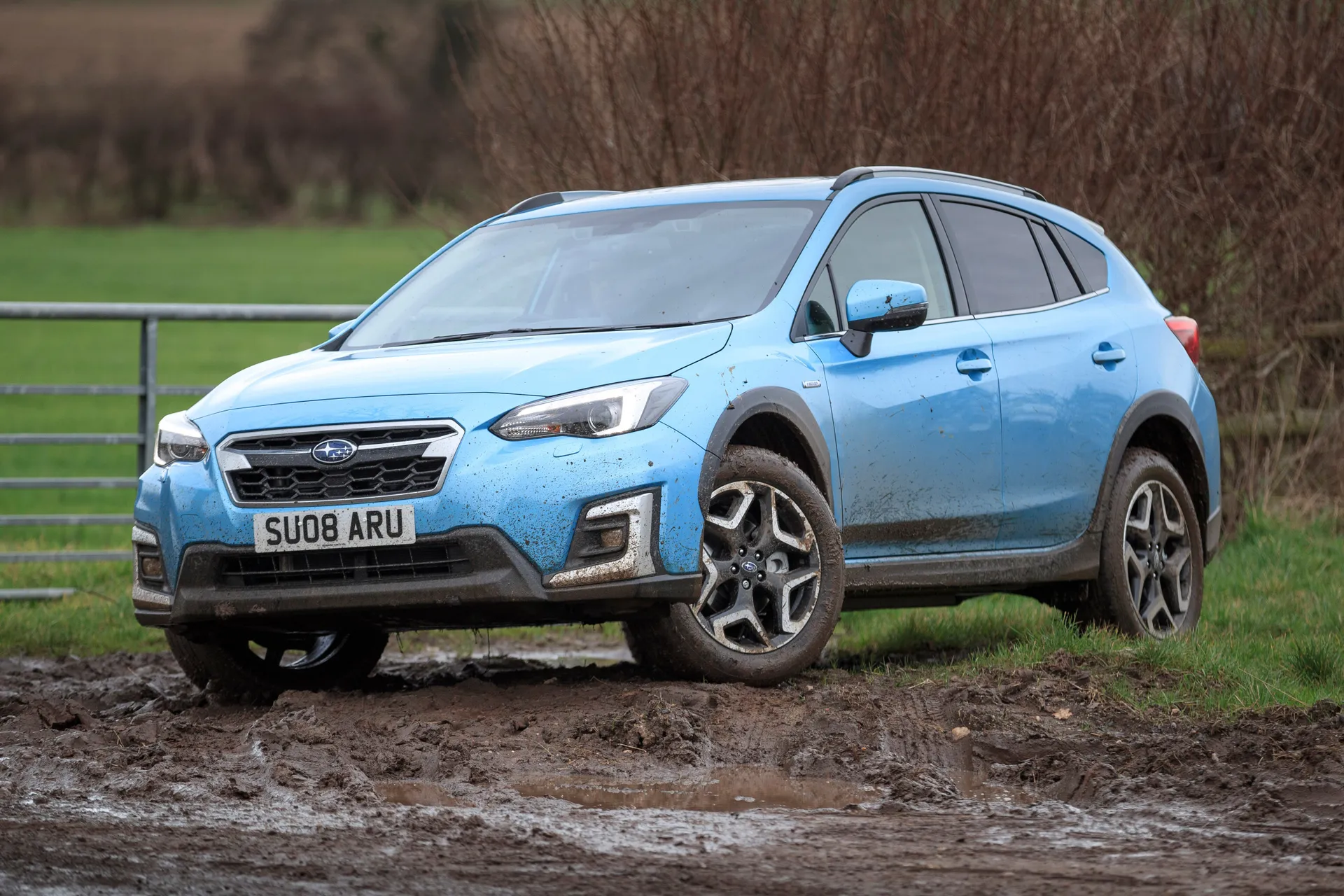
Our Subaru XV review looks at the small SUV and while it's not the cheapest SUV or best looking or cheapest to run, it throws something different into the mix. We run through why should it be on your shortlist when you’re looking to buy your next car.
Quite simply, because it’s almost a unique proposition in a very crowded sector. Thanks to its permanent all-wheel-drive system, the Subaru XV can venture further off-road than the vast majority of its rivals.
It’s also packed with plenty of standard equipment, including an impressive arsenal of driver assistance and safety systems. All of which means the Subaru XV can justify its relatively high price, even in the context of some of its more premium rivals.
Although the current Subaru XV looks very similar to the old version, it’s actually all-new. Subaru has worked hard to put right some of the wrongs of the original, which means it’s better to drive, nicer inside and easier to live with.
The most significant step forward is the arrival of the new 2.0-litre e-Boxer hybrid engine. Not only does it offer more punch than the lacklustre 1.6i petrol engine, it’s also more economical. It might be more expensive to buy, but the hybrid is worth the additional expense.
This car will always remain a niche purchase in Europe, with its market potential limited by the lack of a diesel engine, a manual gearbox and the low running costs offered by the majority of small SUVs.
The fact is, you’ll buy a Subaru XV because you need the all-weather traction, the reassurance of Subaru’s reputation for reliability and the long warranty. This thing feels built to last and ready to tackle everything you throw at it.
Inside, you’ll find a cabin that prioritises function over form, but the Subaru XV scores highly for a clear dashboard layout and excellent comfort. All-round visibility is good, which will come in handy when you venture off-road. There are a few drawbacks. The middle rear seat is lacking in space, there’s limited headroom in the back and the boot is a little on the small side, especially in the e-Boxer hybrid.
There’s also the issue of finances, with the Subaru XV’s expensive price matched by the high running costs. Having said that, what you spend on fuel and maintenance, you’re likely to save in terms of repairs and breakdowns. Historical evidence suggests that the Subaru XV will provide years of dependable and reliable service.
It’s not the most obvious choice, but that’s part of its appeal. See a Subaru XV and you’ll know that the owner made a conscious and considered decision to buy something a little different. When the weather turns nasty and the road turns to dust or gravel, you’ll be glad you chose the Subaru XV.
Looking for a used car for sale? We've got 100s of Subaru Approved Used Cars for Sale for you to choose from, including a wide range of Subaru XV models for sale. If you're looking for the older version, you need our Subaru XV (2012-2018) review.
Is the Subaru XV right for you?
The Subaru XV isn’t the kind of car you buy on a whim. Although it sits in a sector dominated by small SUVs that are unable to venture further off-road than the kerb outside the school gate, the Subaru XV is ready for the rough and tough stuff.
In some parts of the world it is known as the Crosstrek, which provides a subtle clue as to what this car is designed to do. All versions are all-wheel drive, which means you benefit from superb all-weather traction and off-road ability.
It’s not a cheap car to buy, but the recent launch of a new 2.0i e-Boxer petrol-electric hybrid version helps keep running costs in check. You also benefit from Subaru’s excellent reputation for reliability and a five-year warranty.
If you’re after a cheap finance deal, or the efficiency of a diesel or tiny turbocharged petrol engine, look elsewhere. If you need a rugged and dependable small SUV, read on.
What’s the best Subaru XV model/engine to choose?
Taking price out of the equation, the 2.0i e-Boxer is the best version of the Subaru XV. It’s more economical than the 1.6, significantly quicker, punchier and more refined. Price aside, it almost renders the 1.6 redundant.
It’s not as though the hybrid is significantly more expensive than the standard petrol. There’s not a huge difference between the 1.6i SE Premium and the 2.0i e-Boxer SE. If you intend to keep the Subaru XV for the long haul, the hybrid is the best choice.
As for specification, the Subaru XV comes with a generous level of equipment straight out of the box. SE trim packs everything you need, so you have to ask if it’s worth upgrading to SE Premium for leather seats, a sunroof, satellite navigation and an electric driver’s seat. Let your smartphone handle the mapping and save the money.
What other cars are similar to the Subaru XV?
Don’t confuse the Subaru XV with some of the limp-wristed lightweights in the small SUV segment. It rivals the Jeep Renegade in terms of off-road ability and has the potential to steal sales from premium players like the Volvo XC40 and Audi Q3.
Not that the Subaru has the brand image to tempt too many people away from Audi, BMW, Land Rover and Mercedes-Benz. Things are different in the more remote parts of the United States, where many buyers rely on the XV simply to keep moving. Internally, the Subaru Impreza rivals the 1.6i version of the Subaru XV, as does the larger and more spacious Subaru Forester.
Comfort and design: Subaru XV interior
"Subaru models of old were hamstrung by drab interiors that lacked quality. The Subaru XV is a different story, but it retains an air of functionality that will appeal to Subaru loyalists. You can’t accuse the XV of prioritising form over function."
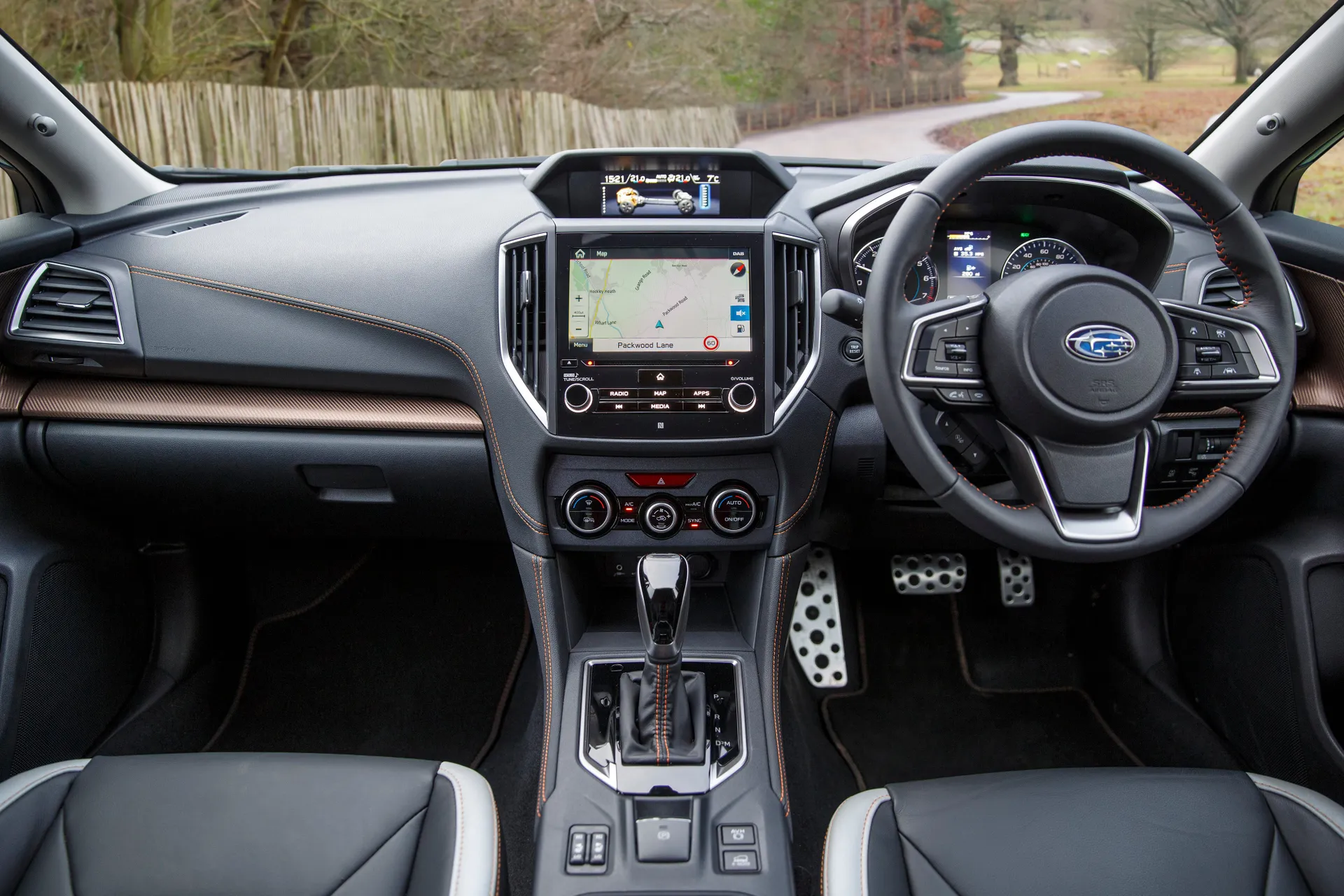
You sit relatively high, with the Subaru XV boasting 220mm of ground clearance. This gives the car a kind of ‘Impreza on stilts’ appearance, which is perfectly acceptable in a market obsessed with high-riding small SUVs.
Crucially, all-round visibility is excellent, which will come in handy when you’re fording streams and climbing mountains. A reversing camera is standard across the range, so you won’t fail to spot that ‘hidden’ tree stump when you’re backing up in a forest.
It’s also supremely comfortable. We spent several hours in the seats without any complaints. They’re not cushion-soft like a Volvo XC40, but they provide excellent support, both on and off the road. All versions of the Subaru XV get heated seats, which are leather in SE Premium models.
The steering wheel adjusts for height and reach, with SE models boasting a six-way manually adjustable driver’s seat. SE Premium models get eight-way electric adjustment for the driver’s seat, while e-Boxer models also feature four-way manual adjustment for the passenger seat.
We like the way the climate control settings haven’t been relegated to the touchscreen, along with the clear instrument panel. The 4.3-inch information display atop the dashboard looks a bit odd, but that’s a minor complaint.
Quality and finish
We’d stop short of calling the interior ‘premium’, but the quality and finish is closer to the premium players than to the mainstream manufacturers.
It’s not a sea of soft-touch materials in the cabin, but Subaru would argue that a hard-wearing interior is more important than fancy finishes and flair. Historically, Subaru interiors have felt robust and built to last. The difference here is that the level of perceived quality has gone up a notch or two.
The steering wheel and gearshift knob are trimmed in leather on all models, but you’ll need to upgrade to SE Premium models for leather seats. They look and feel superb, helped in no small part by the contrast stitching.
We also like the use of high-gloss and silver trim to lift certain areas of the cabin, and the way the glovebox and the lid of the central storage bin close with a reassuring thud. We suspect the Subaru XV interior will look pretty much the same after 150,000 miles of hard use as it does when new.
Besides, you don’t want to be worrying about your dog damaging precious soft-touch materials. Function over form. That’s the Subaru way.
Infotainment: Touchscreen, USB, nav and stereo in the Subaru XV
All versions of the Subaru XV get the same eight-inch colour touchscreen infotainment system. As if to prove that old habits die hard, it comes with a CD player, which is kind of quaint.
Other features include Apple CarPlay and Android Auto plus DAB digital radio, voice control, audio controls on the steering wheel, Bluetooth and six speakers. There are two USB ports in models with the 1.6 engine, but just one in the e-Boxer hybrid.
The display is crisp and clear, while the menu features large and logical options that are easy to use on the move. Helpfully, there are buttons below the screen, so you’re not totally reliant on the touchscreen. It looks a little dated, but that’s a minor gripe considering what Subaru displays looked like just a few years ago.
Satellite navigation is fitted to SE Premium models, but we wouldn’t recommend upgrading to the higher trim level on the strength of the sat nav. The mapping looks a little dated and can be a bit slow to respond. We’d recommend using one of the third party navigation services offered via Apple CarPlay or Android Auto.
A 4.3-inch display mounted high on the dashboard provides information on fuel economy, maintenance, outside temperature and the time.
Space and practicality: Subaru XV boot space
Practicality could be one reason to buy the 1.6-litre version of the Subaru XV. A 385-litre boot isn’t exactly generous by small SUV standards, but thanks to the hybrid system, this drops to 340 litres in the e-Boxer.
To provide some context, the Seat Ateca boasts up to 510 litres of boot space, or 485 litres if you opt for a four-wheel-drive version. Meanwhile, there’s a 472-litre boot in the Renault Kadjar.
The rear seats split 60/40 and fold to provide 1270 litres of space in the 1.6 version, or 1173 litres in the e-Boxer hybrid. Not large by any standards, but the Subaru XV does benefit from a low loading lip and a wide opening. You get underfloor boot storage in the 1.6, but not the hybrid.
The Subaru XV is 4,465mm long, 1,800mm wide (excluding mirrors) and 1,615mm tall so things are more positive in the cabin, with the doors opening to near 90 degrees to make it easier to enter and exit. This is also handy when you’re loading a child into a car seat. The XV features a pair of ISOFIX points in the back and child-proof rear door locks.
The rear seats are best suited to two adults, because space for the raised middle seat is restricted by the transmission tunnel and the central storage box. Space is fine for the outer seats, but the headroom is limited by the sloping roofline. There are more spacious small SUV available.
There will be no complaints from anyone travelling in the front, where there’s plenty of shoulder room and headroom. All-round visibility is excellent, with loads of light flooding into the cabin, especially in models fitted with the glass sunroof.
The door pockets are of an excellent size, as is the glovebox and the central storage bin. You also get a pair of cupholders in the front and a further two in the rear armrest. There’s also a slim storage tray between the front seats, a large area at the base of the centre console, plus map pockets on the backs of the front seats. All versions get tie-down hooks and luggage hooks in the boot.
Handling and ride quality: What is the Subaru XV like to drive?
"Although the current Subaru XV might look very similar to the old version, the newer car is much nicer to drive. It has a mature, almost mechanical feel, which is something you’ll appreciate in poor weather."
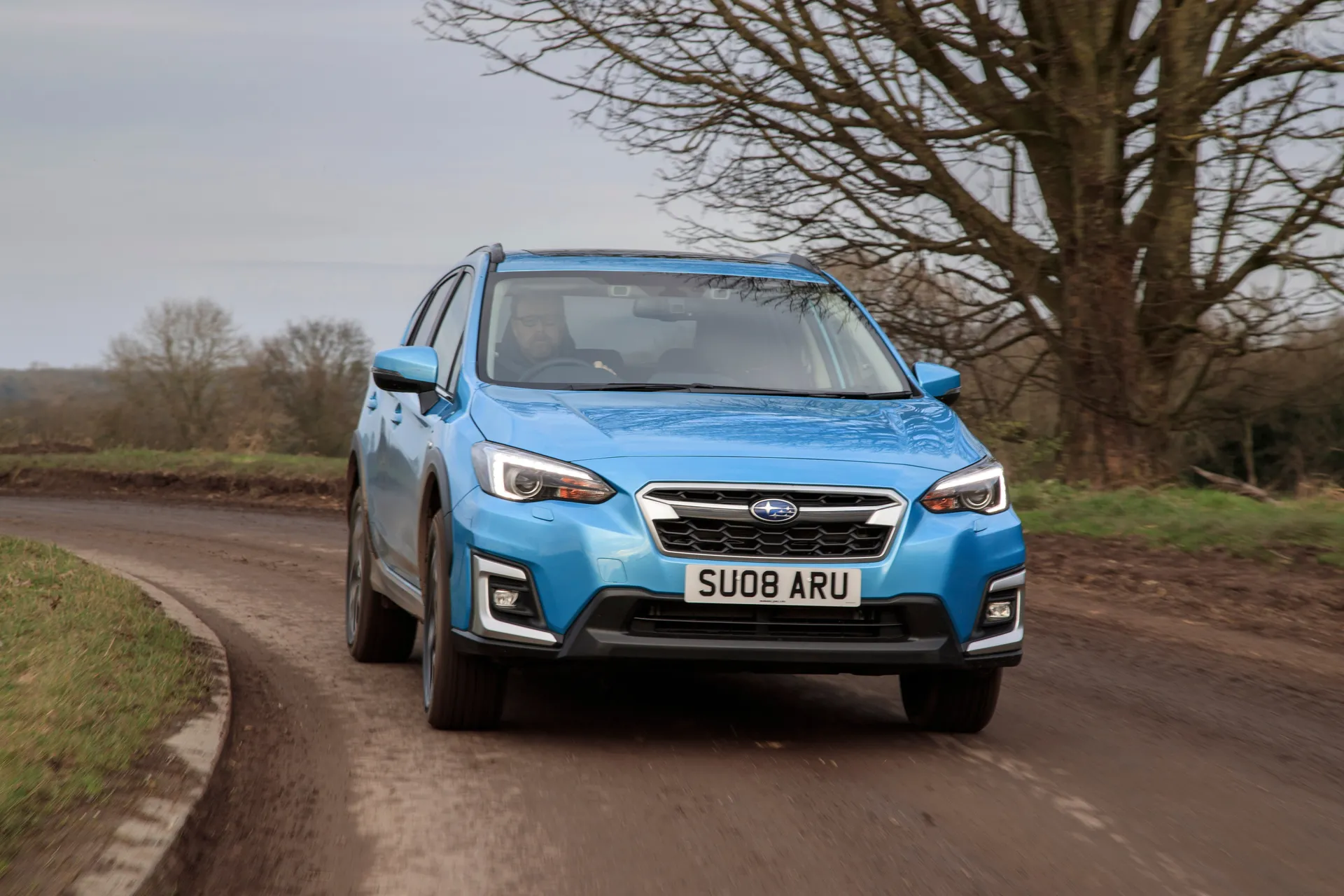
That’s not to say that the Subaru XV feels stodgy and bogged down. Show it a corner and it feels remarkably agile, with very little body-roll and plenty of grip. It feels like a raised Subaru Impreza rather than a full-fat SUV, which means it’s surprisingly good to drive. Sure, the steering is too light, but even this comes into its own when you’re in town.
At 1575kg, the Subaru XV e-Boxer is nearly 170kg heavier than the 1.6 version, but this doesn’t dilute the driving experience. This might have something to do with the weight of the hybrid system, which helps to deliver better weight distribution, which in turn helps the handling.
Either way, the 1.6-litre version rides marginally better than the e-Boxer hybrid, but this is mostly down to the smaller 17-inch alloy wheels.
Of course, how the Subaru XV performs off-road is as important as its on-road manners. Although you’re unlikely to join Land Rover owners in serious off-road pursuits, the XV is ideal for traversing muddy fields or driving along snowy mountain tracks.
The symmetrical all-wheel-drive system system is brilliant, with the engine, gearbox and propshaft mounted in a straight line. It’ll shift power to where traction is needed in lightning-quick time, making the Subaru XV a formidable off-road companion.
You also get an ‘X’ mode, which acts like a conventional diff lock, along with a hill descent mode, which is perfect for when you’re travelling down a snowy mountain or grassy hill. It feels like a proper off-roader because that’s precisely what it is. Once you drive the Subaru XV you’ll begin to see why it commands a premium price.
What engines and gearboxes are available in the Subaru XV?
Although a conventional 2.0-litre petrol engine was available at launch, this has been superseded by the 2.0-litre e-Boxer hybrid. It’s our pick of the engines for a number of reasons.
As a standard hybrid, you only get a minimum amount of all-electric power and there’s no opportunity to plug it in, but it’s so much better than the 1.6-litre engine. The hybrid offers 150PS and 194Nm of torque, which makes it more useful than the 114PS and 150Nm offered by the 1.6.
A 0-62mph time of 10.7 seconds won’t set many pulses racing, but getting up to speed is a more pleasurable experience than it is in the 1.6. A 0-62mph time of 13.9 seconds looks slow, and getting there is a noisy and painful experience. The top speed is 120mph in the e-Boxer and 109mph in the 1.6.
Crucially, the e-Boxer is more efficient, offering a claimed 35.7mpg, which is more than the claimed 35.3mpg in the 1.6.
There are no diesel engines or a manual gearbox offered in the Subaru XV, which will limit its appeal in some markets. That said, the Lineartronic continuously variable transmission (CVT) is far from unpleasant. It features fake gear ratios to mimic a conventional automatic transmission, while e-Boxer versions boast paddle shifts for greater control.
In all cases, you should avoid flooring the throttle, because the CVT responds with the familiar ‘all noise and no action’ effect of other units. This is especially true in the 1.6-litre version.
Refinement and noise levels
The current Subaru XV feels far more refined than its predecessor. You feel nicely cocooned from the outside world, although there is a fair amount of wind and road noise at high speeds. You can thank the roof rails and large door mirrors for this.
At its heart is the familiar ‘Boxer’ engine, which offers less vibration than other engines, along with reduced noise at lower speeds.
Things start to unravel in the 1.6-litre version, which lacks the power and grunt to propel the XV forward at anything approaching a decent lick. It really struggles on hills, which is a key problem when you consider the car’s target audience, while joining motorways via slip roads can be a tortuous experience.
For the most part, the CVT transmission is smooth and unintrusive. Just avoid any sudden inputs, as it doesn’t like being surprised.
Overall, though, the Subaru XV feels like a refined and thoroughly robust vehicle. You can’t say this about all of the small SUV available to buy new.
Safety equipment: How safe is the Subaru XV?
The Subaru XV was awarded a maximum five-star safety rating when it was crash-tested by Euro NCAP in 2017.
It achieved some excellent individual scores, including 94% for adult occupant protection, 89% for child occupant protection, 84% for pedestrian safety and 68% for safety assist systems. That score for safety assist was the second highest recorded in 2017.
Key to this is the fitment of Subaru’s excellent EyeSight technology. Developed in-house, the system uses a pair of cameras to scan the road ahead, tracking other vehicles and pedestrians to identify potential hazards.
There are six parts to EyeSight: pre-collision braking, pre-collision throttle management, adaptive cruise control, lane-departure warning, lane-keep assist and lead vehicle start alert. It’s one of the best systems on the market, helping to reduce the cost of insurance for the XV.
Other safety features fitted as standard include blind-spot monitoring, lane-change assist, rear cross-traffic alert, a reversing camera, multiple airbags, whiplash reducing front seats, high-beam assist, LED headlights, headlight washers and a reversing camera.
You also benefit from Subaru’s permanent all-wheel-drive system, which provides excellent all-weather reassurance.
All of this should be taken into account when considering the purchase of a Subaru XV. It might be expensive when viewed in the context of mainstream rivals, but the safety arsenal would cost significantly more if you were buying a premium small SUV.
MPG and fuel costs: What does a Subaru XV cost to run?
"Without a diesel option in the range, the Subaru XV struggles to deliver reasonable fuel economy. That said, the Subaru XV e-Boxer is actually more efficient than the 1.6i petrol, thanks in no small part to the hybrid technology."
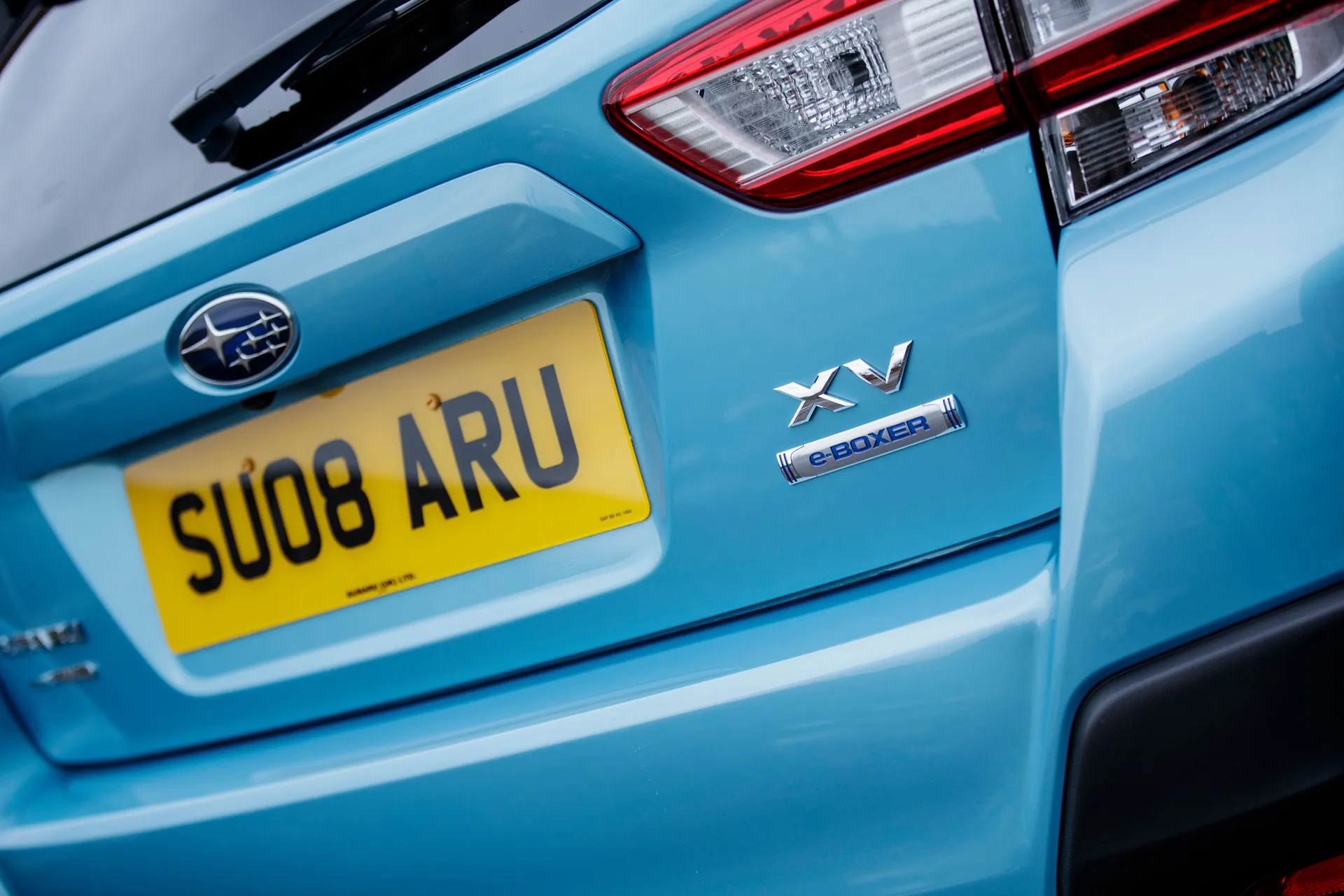
The Subaru XV e-Boxer could deliver 35.7mpg on a combined cycle, which is slightly better than the 35.3mpg offered by the 1.6i petrol version.
Although the e-Boxer was launched too recently to have featured in HonestJohn.co.uk Real MPG, the 1.6i petrol achieved 38.4mpg, which is more than the official figure. The old non-hybrid 2.0-litre petrol recorded a figure of 35mpg, so there’s every reason to believe the e-Boxer will deliver on its promise.
How reliable is the Subaru XV?
Subaru has a great reputation for reliability and the Subaru XV scored an average of 9.4 out of 10 for reliability in the latest HonestJohn.co.uk Satisfaction Index. Overall, Subaru ranked 7th out of 30 manufacturers.
Insurance groups and costs
The Subaru XV 1.6i petrol slots into insurance group 10, which is incredibly low for a car of this type. You can thank the relatively small engine and the EyeSight technology for the affordable insurance.
You’ll pay more to insure the XV e-Boxer, but group 16 is still relatively low for an off-roader with a 2.0-litre engine. Other Subaru models are more expensive, including the Subaru Forester (groups 20 and 21) and Subaru Levorg (17).
Meanwhile, the Subaru Impreza is given a 12 group rating, which means it will cost more to insure than the basic Subaru XV.
VED car tax: What is the annual road tax on a Subaru XV?
Buy a new Subaru XV and the first Vehicle Excise Duty (VED, or road tax) payment will be included in the price of the car as ‘showroom tax’. The rate is £870 for the 1.6i petrol version and £860 for the 2.0i e-Boxer. In year two, the rates drop to £150 for the petrol and £140 for the hybrid.
This is the same for all versions of the current Subaru XV. The government provides a £10 discount for alternative fuel vehicles, hence the small saving when buying the hybrid.
How much should you be paying for a used Subaru XV?
"Although it’s possible to buy an older Subaru XV for as little as £6000, you’ll need to spend at least £17,500 to secure an example of the current car. For this price you can expect to find a 1.6i or 2.0i petrol XV registered in 2018 with up to 30,000 miles on the clock."
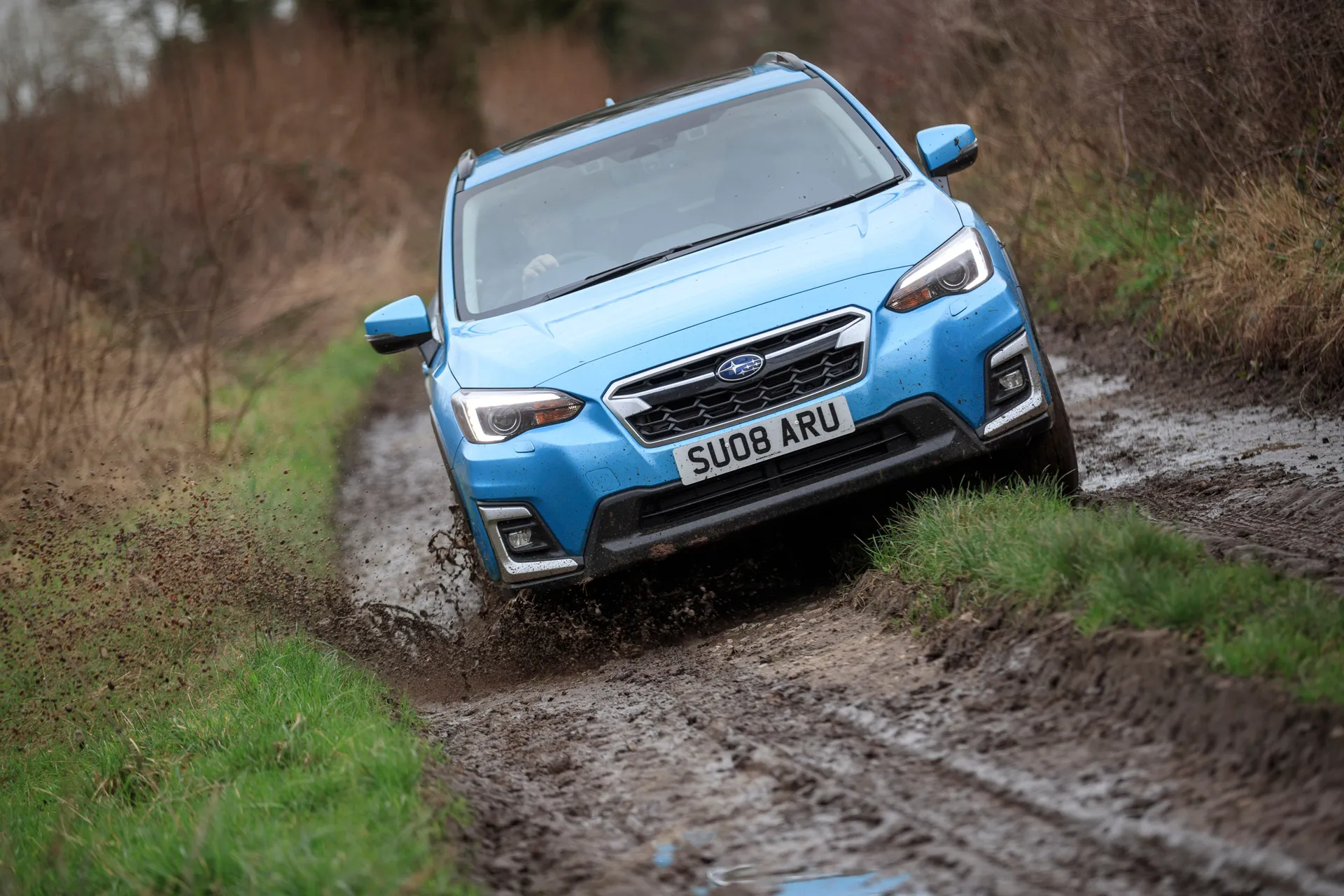
Because the 2.0i e-Boxer hybrid didn’t arrive until January 2020, you’ll spend at least £27,000. Many of the cars available are SE Premium versions, so this represents a saving of around £8,000 on the list price.
The XV isn’t a cheap used car, but it’s worth taking into account the five-year warranty and Subaru’s excellent reputation for reliability. People tend to buy a Subaru because they need its all-weather and off-road capabilities.
Trim levels and standard equipment
The range kicks off with the 1.6i SE Lineartronic. This entry-level model features 17-inch alloy wheels, automatic LED headlights, heated front seats, keyless entry and start, dual-zone climate control, an eight-inch touchscreen, DAB digital radio, Apple CarPlay, Android Auto, adaptive cruise control, a reversing camera and EyeSight driver assistance.
Upgrading to the 1.6i SE Premium adds a sunroof, leather seats, electric adjustment for the driver’s seat and satellite navigation.
The SE version of the 2.0i e-Boxer boasts more equipment than the equivalent spec on the 1.6i version. This includes daytime running lights, front LED fog lights, 18-inch alloy wheels, four-way adjustment for the passenger seat, aluminium pedals, paddle shift and auto vehicle hold.
The SE Premium version of the 2.0-i e-Boxer is broadly similar to the SE Premium trim on the 1.6i car. Changes include 18-inch alloy wheels, sunroof, four-way adjustment for the passenger seat, aluminium pedals, paddle shift and auto vehicle hold.
Ask the heycar experts: common questions
Is the Subaru XV a reliable car?
Which Subaru XV is top of the range?
Is the Subaru XV fast?
Get our latest advice, news and offers
Keep me updated by email with the latest advice, news and offers from heycar.
By submitting you agree to our privacy policy



